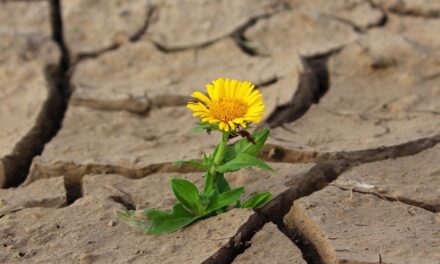In a world where the unexpected has become the norm, the art of preparation has never been more crucial. For preppers and survival enthusiasts, long-term food storage is a cornerstone of readiness, ensuring sustenance through thick and thin. This comprehensive guide dives deep into the essentials of long-term food storage solutions, offering insights, strategies, and tips to secure your food supply in the face of uncertainties. It’s not merely about stockpiling; it’s about smart planning, preservation, and understanding the science behind sustaining food’s shelf life.
Long-term food storage transcends the basics of canned goods and dry staples. It encompasses a broad spectrum of techniques, from freeze-drying and dehydration to vacuum sealing and proper containerization. These methods are not only about ensuring food availability; they’re about maintaining nutritional value, taste, and safety over extended periods. In this guide, we explore the various aspects of long-term food storage, including selecting the right foods, understanding preservation methods, and managing your stockpile effectively.
The significance of long-term food storage extends beyond individual survival; it’s about community resilience, reducing dependence on fragile supply chains, and fostering a culture of self-reliance. Whether you’re a seasoned prepper or new to the concept of preparedness, this article will equip you with the knowledge to build a comprehensive long-term food storage system that can withstand the test of time and uncertainty.
Join us as we navigate the intricacies of long-term food storage, from the essentials of creating a balanced and nutritious stockpile to the nuances of preservation techniques and storage conditions. Our goal is to empower you with the skills and insight to ensure your food security, regardless of what the future holds. So, let’s embark on this journey of preparation, where every step taken today is a stride toward resilience and peace of mind tomorrow.
Strategies for Effective Long-Term Food Storage
Choosing the Right Foods for Longevity
Not all foods are created equal when it comes to long-term storage. Focus on nutrient-dense, non-perishable items that require minimal maintenance. Staples like rice, beans, dried lentils, whole grains, and powdered milk provide a solid foundation. Additionally, consider freeze-dried fruits, vegetables, and meats for variety and nutrition. The key is selecting foods with a long shelf life that you and your family are already accustomed to eating.
Preservation Techniques to Maximize Shelf Life
Proper preservation is paramount in extending the life of your food stores. Techniques such as freeze-drying, dehydrating, and canning can significantly prolong the shelf life of fresh produce and meats. Vacuum sealing dry goods in mylar bags with oxygen absorbers can protect against spoilage and pests, ensuring your food remains safe and consumable for years.
Storage Conditions Matter
The longevity of your food storage is heavily influenced by its environment. Ideal storage conditions are cool, dark, and dry, with stable temperatures preferably between 50°F and 70°F. Avoid areas where extreme temperature fluctuations are common, as this can accelerate the deterioration of stored food. Proper shelving and organization can also improve accessibility and help manage rotation schedules.
Inventory Management and Rotation
Keeping a detailed inventory of your food supplies is crucial for effective long-term storage. This includes tracking expiration dates, quantities, and types of food. Implement a rotation system to use older items first and replace them with newer stock, ensuring nothing goes to waste. Regular audits of your supply can help identify any issues early, such as potential spoilage or pest infestations.
Consideration for Dietary Needs and Preferences
When planning your long-term food storage, take into account any special dietary needs or preferences your family may have. This could include allergies, intolerances, or simply personal tastes. Having a variety of foods not only ensures nutritional balance but also helps maintain morale and normalcy in challenging times.
Expert Insights on Building a Sustainable Food Supply
Experienced preppers and food storage experts emphasize the importance of diversity and adaptability in your food storage plan. Here are some additional insights:
- Stay Informed: Keep abreast of the latest preservation technologies and food storage solutions. Innovations in the field can offer new opportunities to enhance your food security.
- Practice Preparation: Regularly incorporating stored foods into your meals can help you become familiar with preparation methods and adjust your stockpile according to what works best for your family.
- Community Collaboration: Engaging with a community of like-minded individuals can provide valuable knowledge exchange, bulk purchasing opportunities, and support in times of need.
- Continuous Learning: Consider attending workshops or courses on food preservation and storage techniques. Hands-on experience and expert guidance can significantly improve your proficiency and confidence in managing your long-term food supply.
Effective long-term food storage is an art that requires foresight, organization, and a commitment to continuous improvement. By employing strategic planning, proper preservation methods, and diligent management, preppers can ensure their food security and independence, regardless of future uncertainties.
Conclusion: Ensuring Food Security with Long-term Storage
Establishing a robust long-term food storage system is a critical component of preparedness and self-sufficiency. This guide has traversed the essential steps, from selecting the right foods and mastering preservation techniques to optimizing storage conditions and managing inventory effectively. Embracing these strategies not only secures your nutritional needs during unforeseen events but also empowers you with the confidence to navigate challenges with resilience.
Core Takeaways for Long-term Food Storage Success:
- Quality and Variety: Invest in high-quality, nutrient-dense foods that your family enjoys, ensuring a balanced and varied diet.
- Preservation Mastery: Utilize a combination of preservation methods to extend the shelf life of different food types, from freeze-drying to canning.
- Optimal Storage: Maintain your food in cool, dark, and dry conditions to protect against spoilage and pests.
- Inventory Diligence: Keep a detailed inventory and practice a first-in, first-out rotation policy to maximize the usability of your food supply.
- Continuous Education: Stay informed on the latest in food storage solutions, and don’t hesitate to experiment and adapt your strategy as you learn.
By implementing the insights and strategies outlined in this article, preppers can establish a long-term food storage system that not only withstands the test of time but also supports a healthy, sustainable lifestyle in the face of emergencies. Remember, the journey to effective food storage is ongoing, marked by learning, adaptation, and a proactive approach to preparedness.
As we conclude this comprehensive exploration of long-term food storage solutions for preppers, let’s remember that preparedness is more than a set of actions—it’s a mindset. It’s about taking deliberate steps today to ensure peace of mind tomorrow. With the right knowledge, tools, and dedication, you can secure your food independence and nurture resilience in an ever-changing world.








